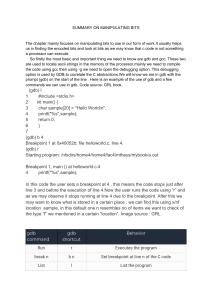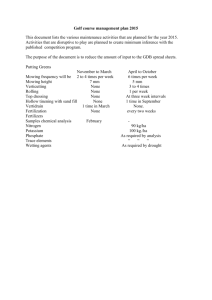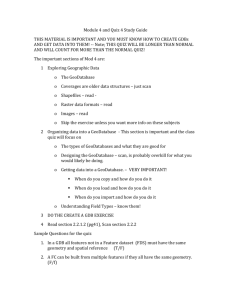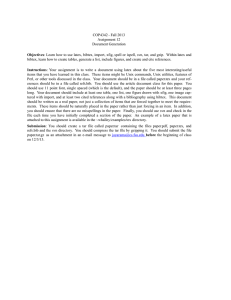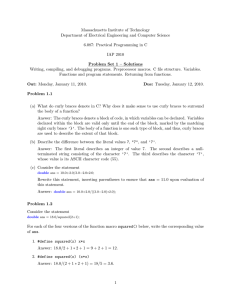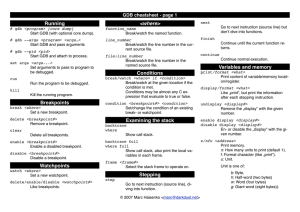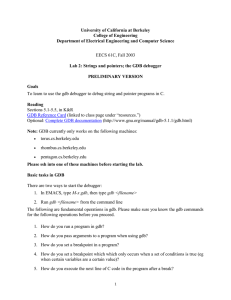FOR357/557 CLASS EXERCISE #2
advertisement
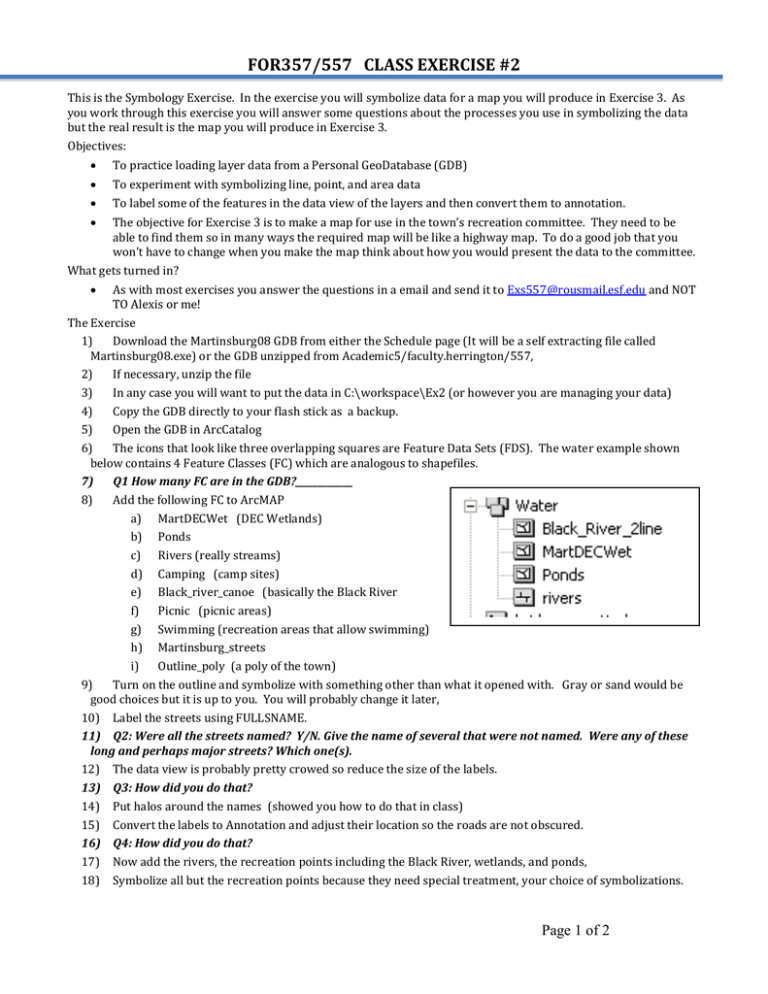
FOR357/557 CLASS EXERCISE #2 This is the Symbology Exercise. In the exercise you will symbolize data for a map you will produce in Exercise 3. As you work through this exercise you will answer some questions about the processes you use in symbolizing the data but the real result is the map you will produce in Exercise 3. Objectives: To practice loading layer data from a Personal GeoDatabase (GDB) To experiment with symbolizing line, point, and area data To label some of the features in the data view of the layers and then convert them to annotation. The objective for Exercise 3 is to make a map for use in the town’s recreation committee. They need to be able to find them so in many ways the required map will be like a highway map. To do a good job that you won’t have to change when you make the map think about how you would present the data to the committee. What gets turned in? As with most exercises you answer the questions in a email and send it to Exs557@rousmail.esf.edu and NOT TO Alexis or me! The Exercise 1) Download the Martinsburg08 GDB from either the Schedule page (It will be a self extracting file called Martinsburg08.exe) or the GDB unzipped from Academic5/faculty.herrington/557, 2) If necessary, unzip the file 3) In any case you will want to put the data in C:\workspace\Ex2 (or however you are managing your data) 4) Copy the GDB directly to your flash stick as a backup. 5) Open the GDB in ArcCatalog 6) The icons that look like three overlapping squares are Feature Data Sets (FDS). The water example shown below contains 4 Feature Classes (FC) which are analogous to shapefiles. 7) Q1 How many FC are in the GDB?_____________ 8) Add the following FC to ArcMAP a) MartDECWet (DEC Wetlands) b) Ponds c) Rivers (really streams) d) Camping (camp sites) e) Black_river_canoe (basically the Black River f) Picnic (picnic areas) g) Swimming (recreation areas that allow swimming) h) Martinsburg_streets i) Outline_poly (a poly of the town) 9) Turn on the outline and symbolize with something other than what it opened with. Gray or sand would be good choices but it is up to you. You will probably change it later, 10) Label the streets using FULLSNAME. 11) Q2: Were all the streets named? Y/N. Give the name of several that were not named. Were any of these long and perhaps major streets? Which one(s). 12) The data view is probably pretty crowed so reduce the size of the labels. 13) Q3: How did you do that? 14) Put halos around the names (showed you how to do that in class) 15) Convert the labels to Annotation and adjust their location so the roads are not obscured. 16) Q4: How did you do that? 17) Now add the rivers, the recreation points including the Black River, wetlands, and ponds, 18) Symbolize all but the recreation points because they need special treatment, your choice of symbolizations. Page 1 of 2 FOR357/557 CLASS EXERCISE #2 19) Some of the different recreation points are in exactly the same position so you need to make distinctly different point symbols of different sizes so when they are displayed the user can see just what is at each site. 20) Symbolize the streets using the SHIELD field. This is a string field. “S” means that the road is a state highway, “C” means it is a county road and nothing “” means it is a town road. 21) Change the name of the Rivers layer to Streams. 22) Q5: Now suppose you come back to this work later and want to find the actual filename. Where do you find it? Page 2 of 2

